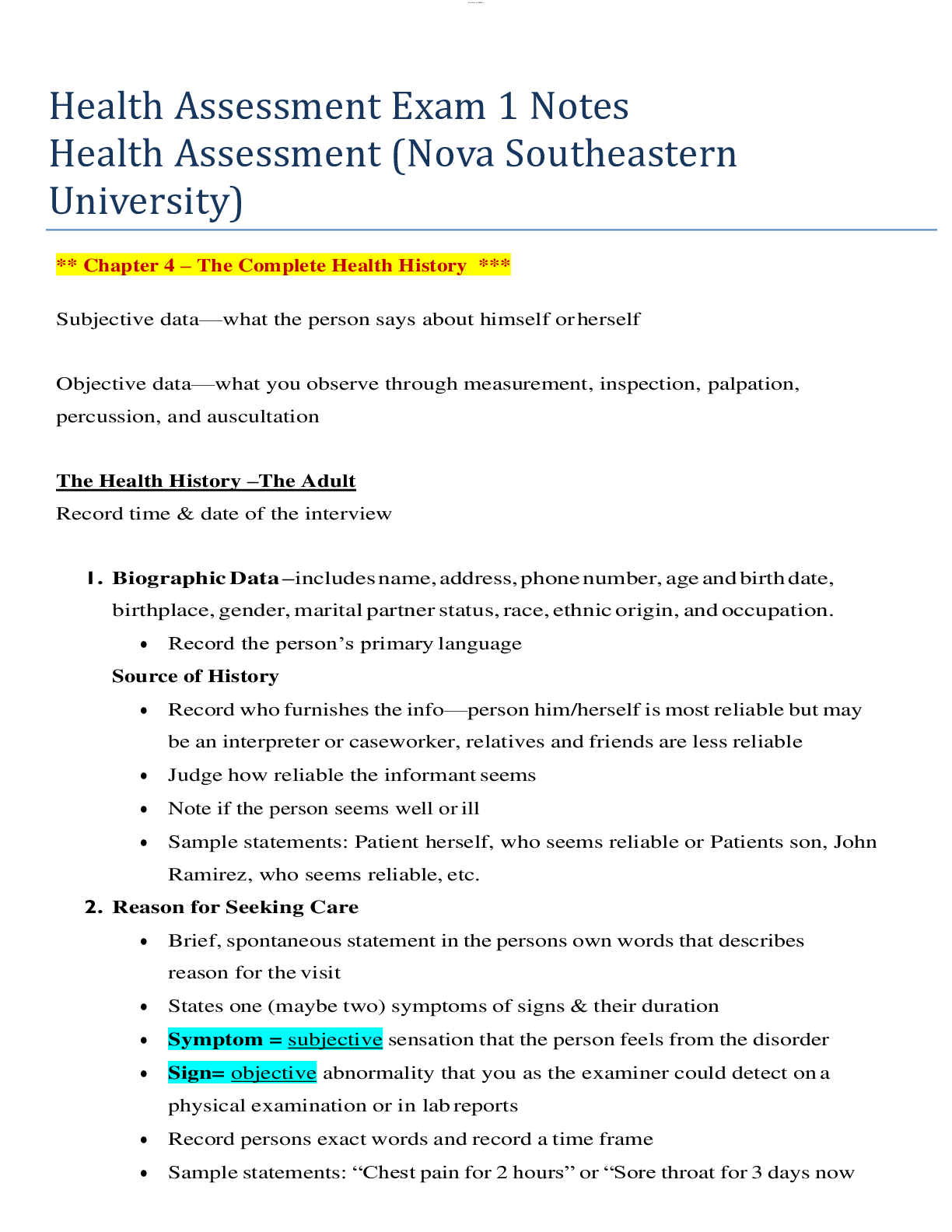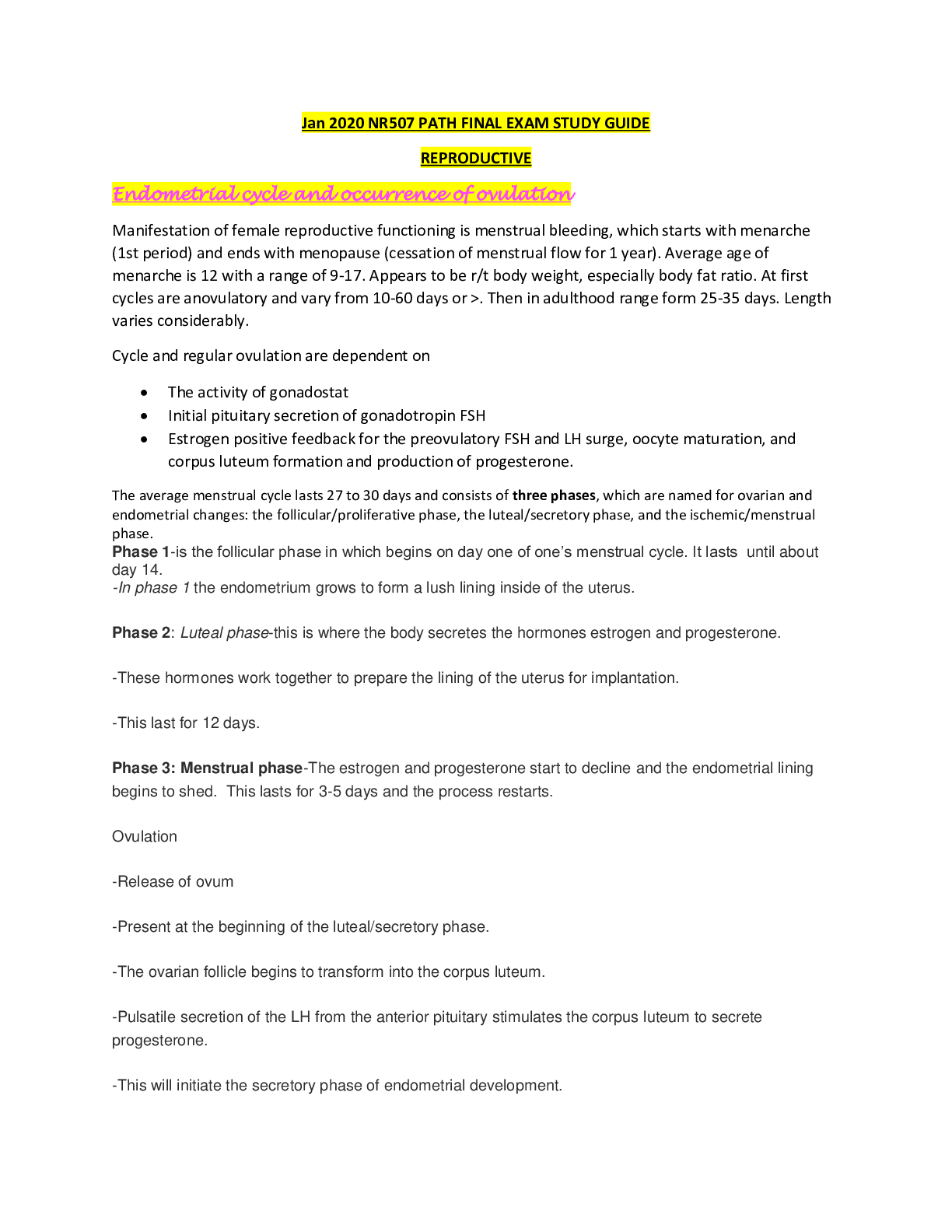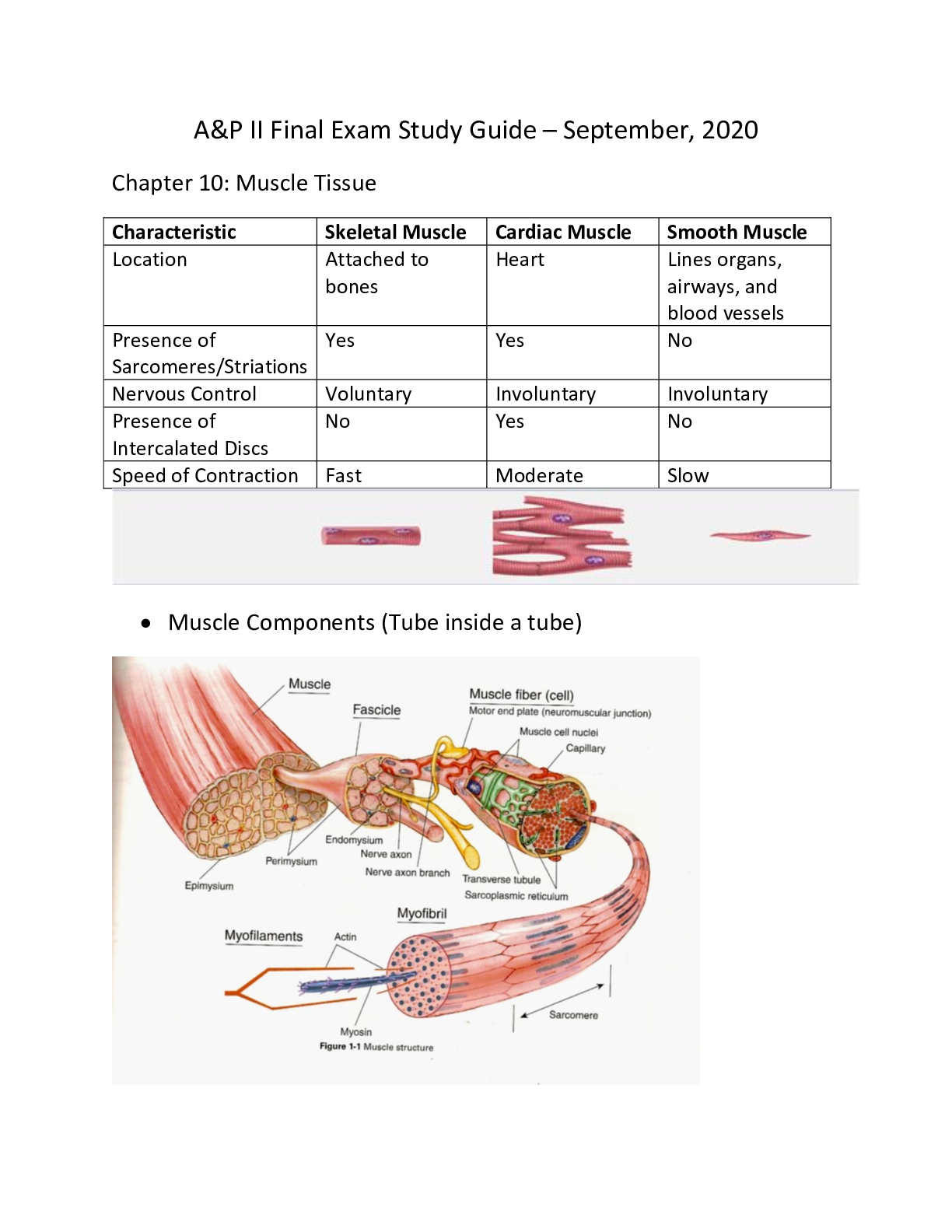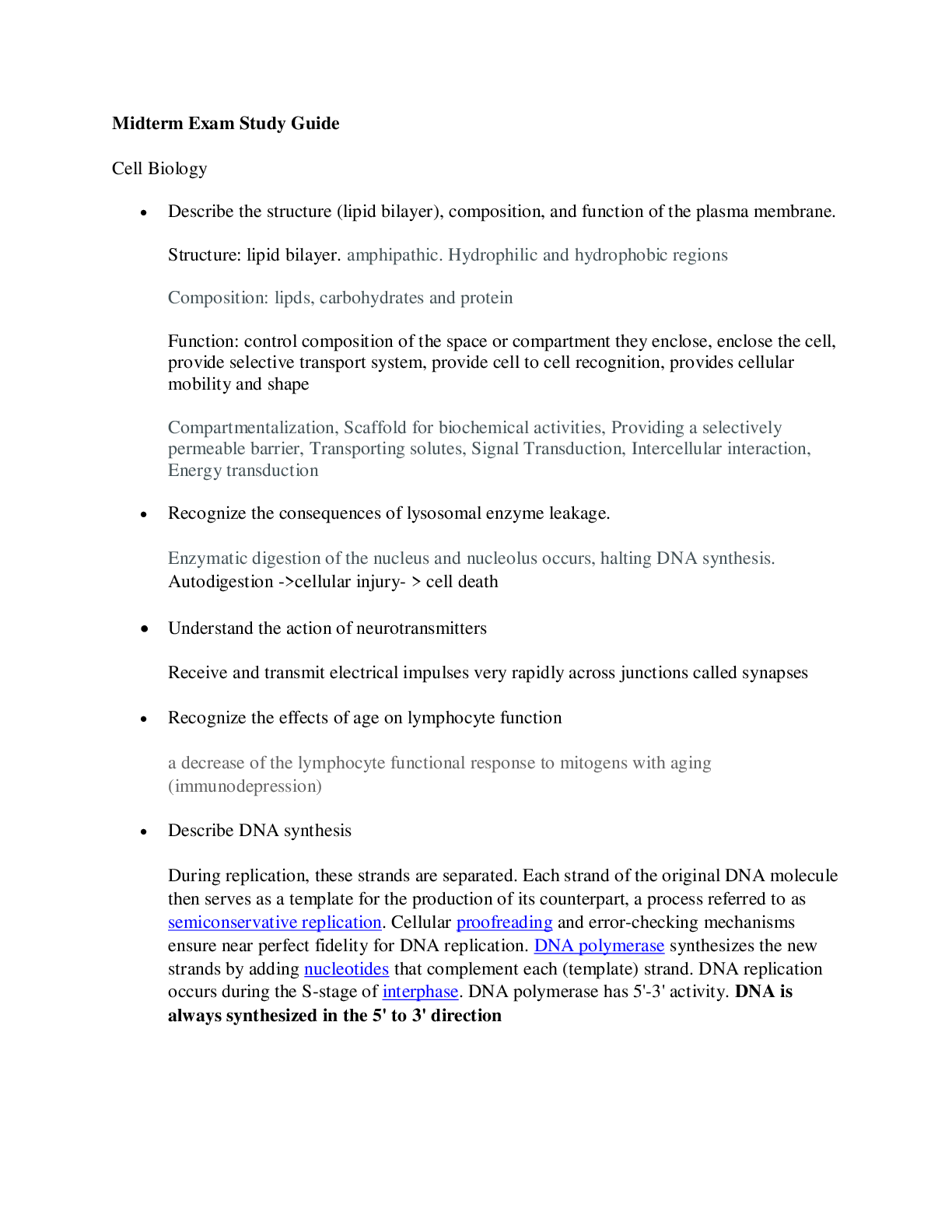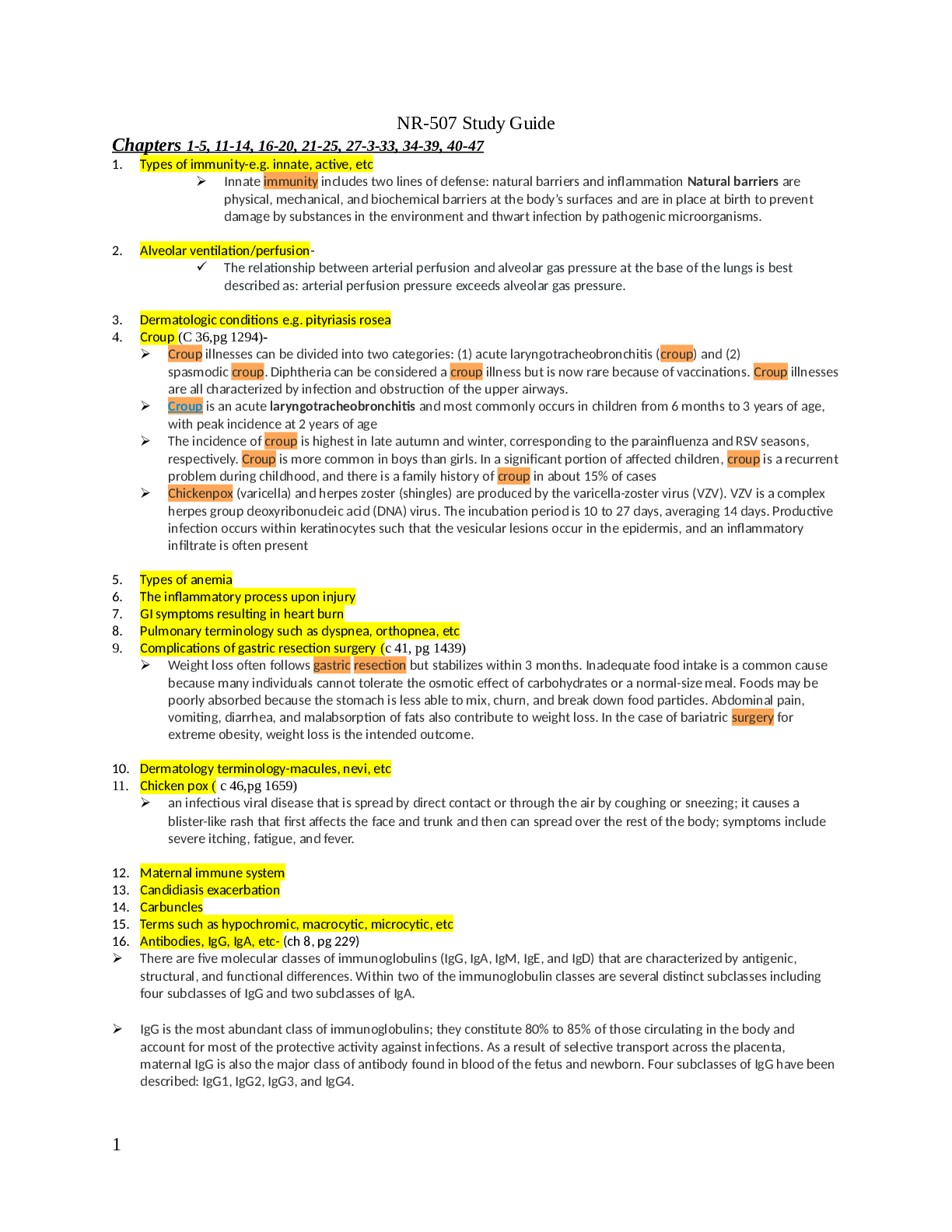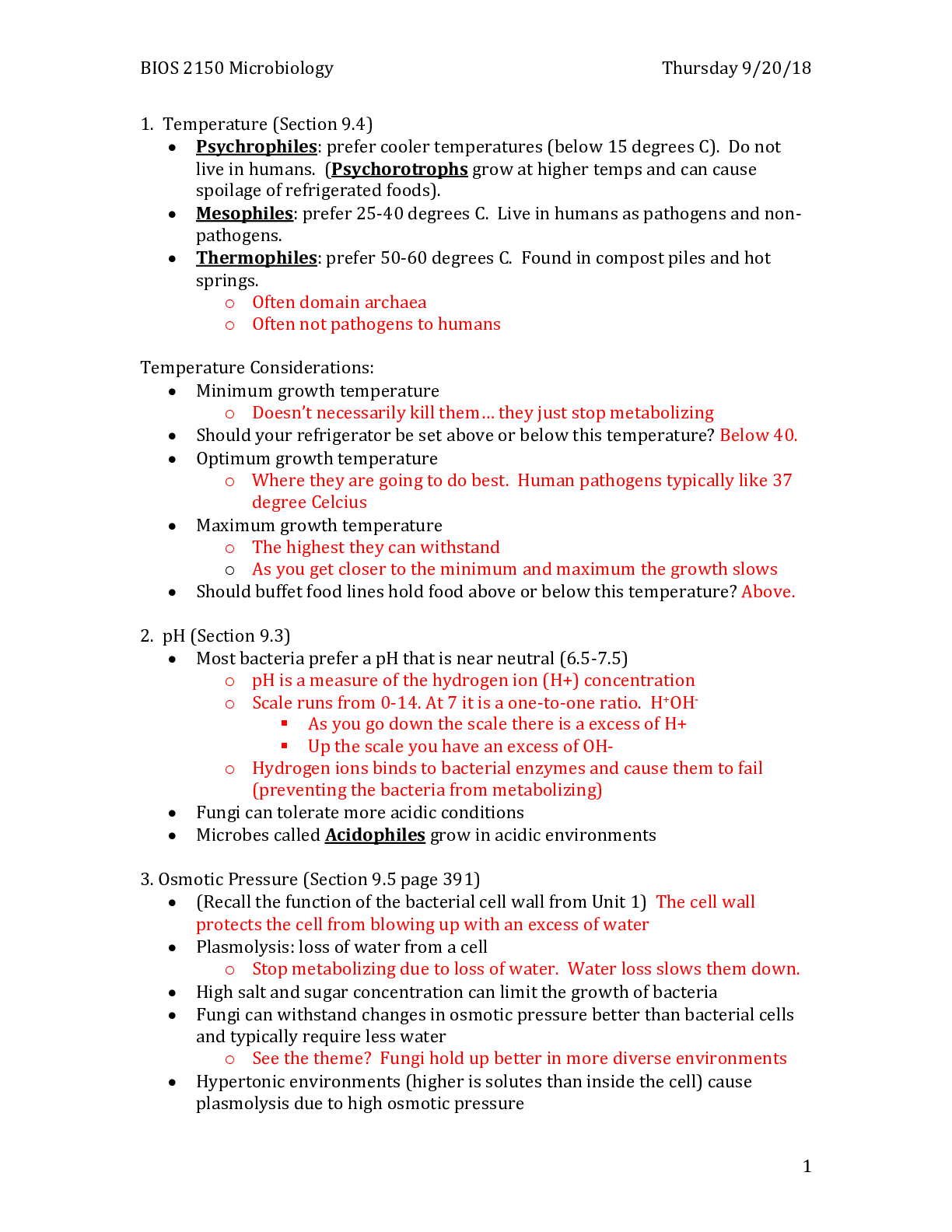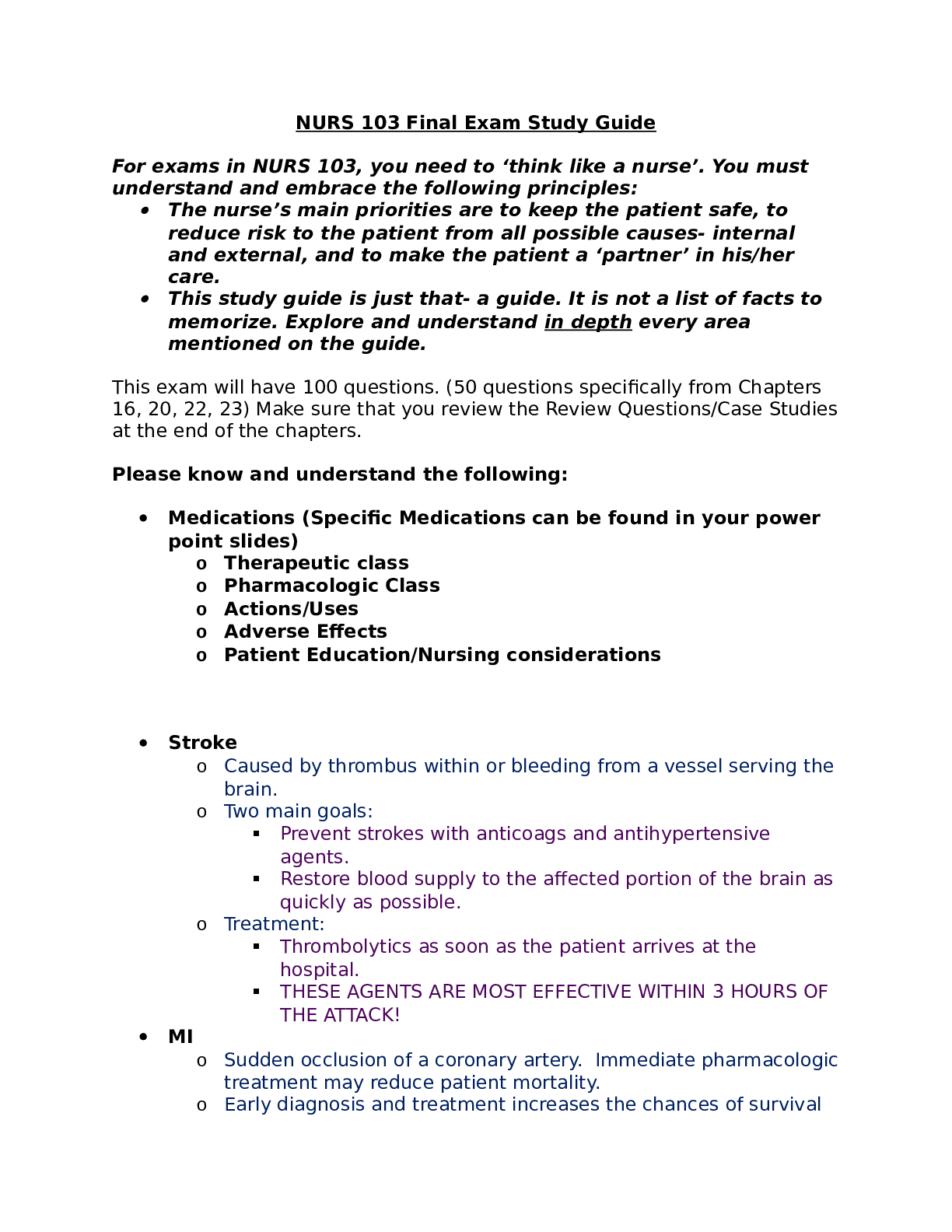Communication > Class Notes > COMM 417/309 Exam Study Guide (All)
COMM 417/309 Exam Study Guide
Document Content and Description Below
Conceptualizing Relational Communication • Human relationships o We can distinguish three general types of human relationships Role relationships o Close relations Have all feature... s of interpersonal relationships, plus: Emotional attachment • Interpersonal communication o The study of relational communication is based on several basic principles of interpersonal communication Principle #1: interpersonal communication is both Principle #5: Interpersonal communication varies in effectiveness Attempted communication occurs when an intended message fails Misinterpretation occurs when the meaning of a message is misconstrued Accidental communication occurs when an unintentional message is nonetheless received Principle #6: Interpersonal communication has both content and relational dimensions • Relational communication o A subcategory of interpersonal communication that focuses on the expression and interpretation of messages within close relationships o Most relationships are: Romantic: heterosexual, homosexual, bisexual Platonic: friends, neighbors, close co-workers Familial: spouses, parents and children, siblings o Close relationships share fundamental relational themes Evolutionary Psychology and Communication • Natural selection o Evolution is change over time Change in an individual organism-such as a person- is called ontogeny o Change in the characteristics of a species is called phylogeny o This is the type of change most people think of when they hear the term evolution • Evolutionally Psychology o Natural selection affects the evolution of physical features, such as height, skin color, and neck length o The brain- which is responsible for psychological traits such as intelligence, empathy, emotional control, and humor- is a physical organ • An Evolutionary Framework o Evolutionary psychology helps explain many aspects of relational communication o Nepotism is the tendency to favor one’s relatives over nonrelatives in the distribution of resources Inclusive fitness recognizes that it is survival and reproduction of the gene, not the individual, that matters Relational Identity • Personal identity o Your identity is your self-concept- your stable ideas about who you are Identities are multi-faceted Multiple selves • Identity Management o Identities provide a structure of who we are Relationships: wife, son, friend Roles: student, intern, soccer player Goals: buy a house, finish my degree Qualities: honest, friendly, discerning Identity Management • Identity guides our behavior o Those who think of themselves as athletic are more likely to work out; those who see themselves as good students are more likely to study o This relationship can lead to a self-fulfilling prophecy Self- Presentation • Self-presentation is the way we convey and communicate our identities to other people • Another manipulation of self-presentation, emotional labor, occurs when one’s job requires the display of emotions one isn’t feeling Drawing people together • Process of attraction o Attraction is any force that draws two entities together Gravity Magnetism Interpersonal attraction Draws people together relationally o Attraction theory is a set of o Somatotype An assessment of body shape based on relative height and weight Ectomophic type: • An underweight body o Mesomporphic type • Even the ambient temperature may make a difference o Williams and Bargh showed that being in a warm environment, or even holding a war drink, promote Managing Uncertainty & Expectations • Uncertainty o Each of us has a need for certainty We function best when we feel like we have an understanding of what to expect o Expectations come in two forms Predicative expectations Describe what we predict will happen in a given situation Changing Relationships • Some researchers argue that close relationships develop by progressing through a series of stages • Stages • Dialectics o Another non-linear approach to relationship development (and maintenance) is described in Baxter’s relational dialectics theory Closeness Affection • Closeness o Saying that people are “close” can have more than one meaning Social Support • Defining social support o Social support consists of the behaviors we use to assist and care for others o Social support comes in various forms, according to Cutrona and Suhr • Benefits of social support o Social support can have immediate benefits for recipients and senders Self-Disclosure • Self-disclosure occurs when we share information about ourselves that we believe others don’t already know • Self-disclosure is intentional. Unintended disclosures are not included • Self-disclosure varies among relationships • Self-disclosure usually develops gradually • Self-disclosure is usually reciprocal • Self-disclosure is influenced by cultural and gender roles • We can consider self-disclosure along six independent dimensions • Psychologist Art Aron has shown that disclosing answers to 36 questions helps strangers feel close to each other o Given the choice of anyone in the world, whom would you want as a dinner guest? • Privacy boundaries o Everyone manages personal information o How do we keep personal information private? How do you know if you can share personal information- your own or others’- with someone? • Topic avoidance and secret-keeping o How do people keep from sharing private information? Two strategies are common: Topic avoidance means avoiding discussion of certain issues • Love Triangle o Psychologist Robert Sternberg addressed the issue in his triangular theory of love o Intimacy is the “warm” component • Love Styles o John Lee- and later, Clyde and Susan Hendrick- proposed that people develop various love styles that represent their beliefs and expectations about love There are three primary styles: Eros, Storge, and Ludus There are three secondary styles: Mania, Agape, and Pragma [Show More]
Last updated: 2 years ago
Preview 1 out of 48 pages

Buy this document to get the full access instantly
Instant Download Access after purchase
Buy NowInstant download
We Accept:

Reviews( 0 )
$5.00
Can't find what you want? Try our AI powered Search
Document information
Connected school, study & course
About the document
Uploaded On
Mar 29, 2020
Number of pages
48
Written in
Additional information
This document has been written for:
Uploaded
Mar 29, 2020
Downloads
0
Views
133




